
Nasa is looking for diamonds and precious stones on metal asteroid
Nasa is sending a rocket to a metallic asteroid between Mars and Jupiter in the hope of finding diamonds and rubies. The mission, which is set to launch on Friday 13 October, will involve visiting the mysterious metallic asteroid 16 Psyche, which sits in an asteroid belt between the two planets. The journey will take seven years for Falcon Heavy, a craft made by Elon Musk’s space exploration firm SpaceX. It was due to take off on Thursday, but the launch was postponed because of bad weather. Nasa Administrator Bill Nelson said: “We are launching a billion dollar spacecraft all the way beyond Mars and close to Jupiter and it’s going to snuggle up next to a metallic asteroid, and we are going to learn something about that metallic asteroid. “I hope we might find diamonds and rubies on that asteroid. “Everything is a new discovery, and we are glimpsing more of the development of this magnificent thing we call the universe.” Falcon Heavy takes off on its four-billion-mile journey at 10.19am in Florida, from the Kennedy Space Center. That is 3.16pm UK time. By May 2026, it will pass by Mars and use the planet’s gravitational force to slingshot itself toward the asteroid. Four years later, it will reach its destination. There, it will find a rock made up of iron and nickel, scientists believe. But they also think it could contain precious metals and gems. 16 Psyche has puzzled astronomers since it was discovered by Italian astronomer Annibale de Gasparis in 1852. In the 1980s, radar readings found that it was made of metal, leading scientists to speculate that the 130-mile boulder lost its outer shell by colliding with other asteroids. The spacecraft will spend about 26 months in orbit, taking images of the asteroid to get a clearer picture of its topography, surface features, gravity and magnetism. The asteroid will not be mined – but space agencies might just start taking more notice if they find its one massive diamond. Sign up to our free Indy100 weekly newsletter Have your say in our news democracy. Click the upvote icon at the top of the page to help raise this article through the indy100 rankings.
2023-10-13 18:15

A scientist may have just proven that we all live inside a computer simulation
“The Matrix is everywhere. It is all around us. Even now in this very room." So says Laurence Fishburne’s Morpheus in sci-fi classic ‘The Matrix’ as he offers Keanu Reeves’s Neo the choice to find out just how “deep the rabbit hole goes”. Now, just as Neo discovered that the "life" he'd been living was little more than an algorithmic construct, scientists and philosophers are arguing that we could be stuck inside a simulation ourselves. In a paper published earlier this month, physicist Melvin Vopson, of the University of Portsmouth, offered scientific evidence for a philosophical theory known as the simulation hypothesis. This, in a nutshell, posits that the entire universe and our objective reality are just super-advanced virtual reality illusions. Elon Musk is among the well-known fans of the theory, which – as Dr Vopson notes in his paper – has been “gaining traction in scientific circles as well as in the entertainment industry”. The university lecturer also pointed out that recent developments in a branch of science known as information physics “appear to support this possibility”. Information physics suggests that physical reality is made up of bits of information. However, Dr Vopson has gone further and is working to prove that information has a physical mass and is a fundamental building block of the universe. He even claims that information could be the mysterious dark matter that makes up almost a third of the universe. In previous research, the physicist proposed that all elementary particles (the smallest known building blocks in the universe), store information about themselves, much like DNA in humans. Then, in 2022, he discovered a new law of physics, christened the second law of infodynamics, which states that entropy – the degree of randomness or disorder – within an isolated information system either remains constant or decreases over time. In other words, the system becomes less and less chaotic, implying that there is some kind of mechanism governing it rather than random chance. “I knew then that this revelation had far-reaching implications across various scientific disciplines,” Dr Vopson said in a statement released by the University of Portsmouth. “What I wanted to do next is put the law to the test and see if it could further support the simulation hypothesis by moving it on from the philosophical realm to mainstream science.” Is the Universe a Simulation? | Melvin Vopson www.youtube.com Dr Vopson employed the law in a range of different fields, including genetics, cosmology and even symmetry. Here, he found that the abundance of symmetry in the Universe (think snowflakes and facial structures) could be explained by the second law of infodynamics. "Symmetry principles play an important role with respect to the laws of nature, but until now there has been little explanation as to why that could be,” he said. “My findings demonstrate that high symmetry corresponds to the lowest information entropy state, potentially explaining nature's inclination towards it." Again, put simply, nature prefers things to be as well-ordered as possible. He continued: “This approach, where excess information is removed, resembles the process of a computer deleting or compressing waste code to save storage space and optimise power consumption.” As a result, this “supports the idea that we’re living in a simulation.” Dr Vopson is serious about this idea and, last year, even launched a crowdfunding campaign to test it. At the time, he announced that he had designed an experiment to determine whether we are all just characters in an advanced virtual world. “There is a growing community out there looking seriously at the possibility that information is more fundamental to everything than we think,” he said in a statement released back in December. “If information is a key component of everything in the universe, it would make sense that a vast computer somewhere is in control. “Assuming the universe is indeed a simulation, then it must contain a lot of information bits hidden everywhere around us. I’ve devised an experiment that proposes a way of extracting this information to prove it’s there.” His proposed experiment is based on his conclusion that information is physical and that elementary particles have a DNA of information about themselves. He posited that the information in an elementary particle could be detected and measured by using particle-antiparticle collision. “We can measure the information content of a particle by erasing it. If we delete the information from the particles, we can then look at what’s left,” he said in the December statement. “This experiment is highly achievable with our existing tools, and I’m hoping the crowdfunding site will help us achieve it.” And whilst the crowdfunder closed well before reaching its proposed £185,000 target, Dr Vopson still hopes to carry out the ambitious test. Following his most recent paper, he suggested the experiment had the power to confirm the “fifth state of matter in the universe” and “change physics as we know it.” Sign up for our free Indy100 weekly newsletter Have your say in our news democracy. Click the upvote icon at the top of the page to help raise this article through the indy100 rankings.
2023-10-13 16:17
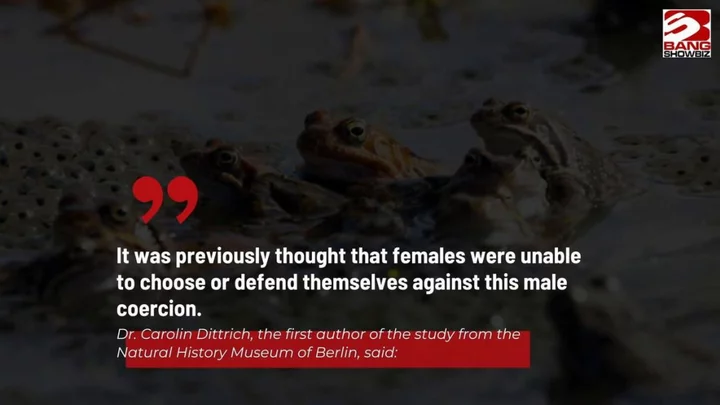
Female frogs fake their own deaths to avoid sex with overzealous males
Some female frogs will go to the extent of faking their own deaths to avoid sex with their male counterparts, a new study has revealed. Researchers in Berlin and Finland focused on the European common frog for their investigation owing to the often alarming nature of the species' mating process. The short breeding season means that several males often cling to a single female – in a pile-on that can cause the female to drown. (So, pretty understandable that they might want to avoid this.) For the research published in the Royal Society Open Science, European common frogs were collected and divided into tanks where there were two females and one male in each. Before this research, it was thought that the females couldn't defend themselves against the aggressive amorous act. However, a number of the wily participants displayed the three avoidance behaviours. A rotation technique to escape mating was a popular option – carried out by 83 per cent of the females. While nearly half of them (48 per cent) mimicked how male frogs sound to trick them into letting them go. In 33 per cent of the females, the researchers recorded a stiffening of arms and legs for two minutes, in a convincing bid to play dead. Out of the females who got mounted by a lustful male, almost half were able to escape thanks to at least one of these avoidance behaviours. “The smaller females also showed the full repertoire of behaviours more often than the larger females," the researchers noted, and younger females were more likely to pretend they were dead. However, question marks remain on whether the frogs fake their death as a conscious choice or whether it is a stress response or even a means to test the male’s strength and endurance. “I think even if we call this species a common frog and think we know it well, there are still aspects we don’t know and perhaps haven’t thought about," Dittrich explained to The Guardian. Sign up to our free Indy100 weekly newsletter Have your say in our news democracy. Click the upvote icon at the top of the page to help raise this article through the indy100 rankings.
2023-10-12 21:15
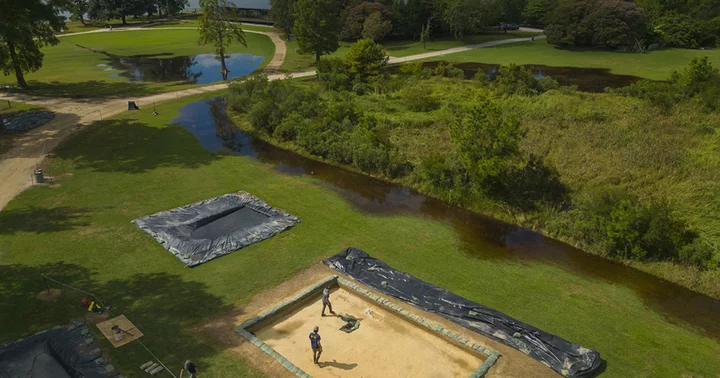
Climate Change Threatens 400-Year-Old Jamestown and Its Buried Secrets
David Givens, an archaeologist in Jamestown, Virginia, is peering into a pit on a hot, cloudless afternoon in
2023-10-12 18:59
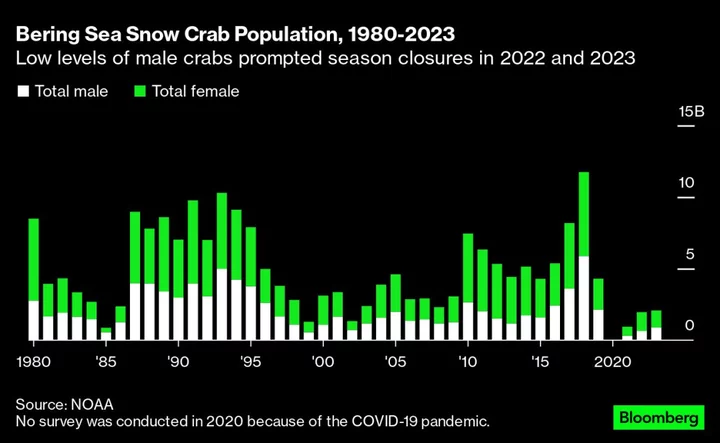
Alaska Shuts Down Its Snow Crab Harvest for the Second Year in a Row
Alaskan officials recently canceled the Bering Sea snow crab season for the second year in a row —
2023-10-12 18:54
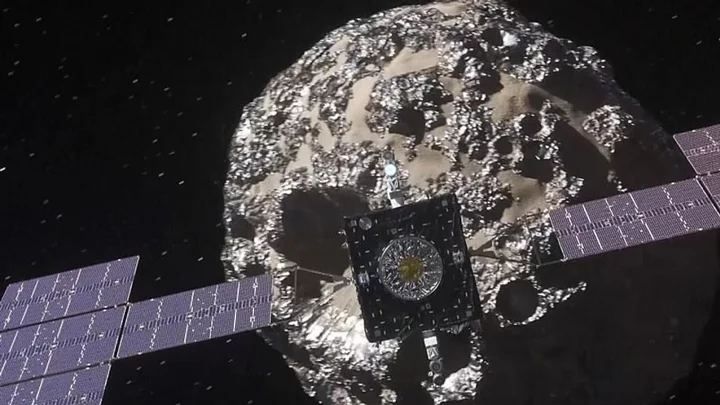
NASA discover signs of water and carbon on asteroid sample
NASA has lifted the lid on its first findings about the Bennu sample, one of the "most hazardous known asteroids". The highly-anticipated sample from the OSIRIS-REx’s mission took seven years to complete and finally made a safe landing on Sunday 24 September. Scientists audibly gasped upon opening the capsule. They kept details to a minimum and maintained a slow pace in progress for "good reason," as they received more material than expected. "The abundance of material found when the science canister lid was removed earlier this week has meant that the process of disassembling the TAGSAM (Touch-and-Go Sample Acquisition Mechanism) head – which holds the bulk of material from the asteroid – is off to a methodical start," they said a the time. That was until now... On Wednesday 11 October, the space agency shared details for the first time from NASA experts and the University of Arizona. NASA said there were signs of water and carbon on the sample through hydrated clay minerals that contain carbon. "At nearly 5% carbon by weight, carbon being the central element of life, far exceeding our goal of 60g, this is the biggest carbon-rich asteroid sample ever returned to earth," Administrator Bill Nelson said, adding that it was "exactly the kind of material that we wanted to find." He went on to suggest that "they are going to help us determine the origin of elements that could have led to life" and provide a greater understanding of how to protect Earth from asteroids. Scientists also revealed that the sample contained space dust from 4.5-billion-year-old asteroid Bennu. NASA showed the audience the sample on a video to protect the sample and to prevent contamination. Speaking about working through a glove box to analyse the sample, Francis McCubbin, astronomical curator at NASA's Johnson Space Centre said: "[It is] "hard, challenging work, and it does not go quickly, but we need to do this right". The samples will be preserved so that "scientists that aren't even born yet are going to have the opportunity to answer questions about our universe with these samples using technology that has not even been invented." Sign up for our free Indy100 weekly newsletter Have your say in our news democracy. Click the upvote icon at the top of the page to help raise this article through the indy100 rankings.
2023-10-12 16:21
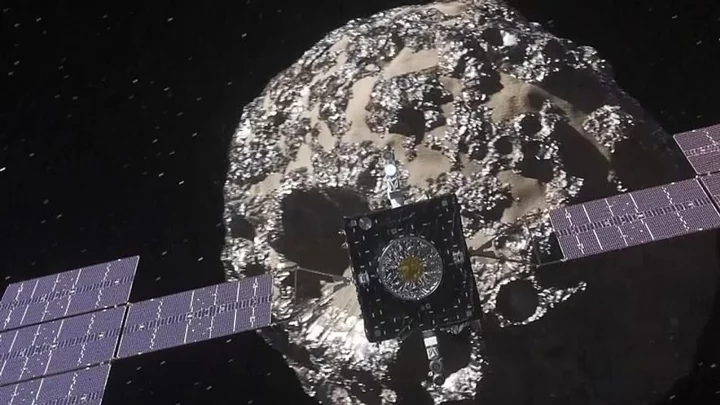
NASA releases first photos and findings from Bennu asteroid sample
NASA has lifted the lid on its first findings about the Bennu sample, one of the "most hazardous known asteroids". The highly-anticipated sample from the OSIRIS-REx’s mission took seven years to complete and finally made a safe landing on Sunday 24 September. Scientists audibly gasped upon opening the capsule. They kept details to a minimum and maintained a slow pace in progress for "good reason," as they received more material than expected. "The abundance of material found when the science canister lid was removed earlier this week has meant that the process of disassembling the TAGSAM (Touch-and-Go Sample Acquisition Mechanism) head – which holds the bulk of material from the asteroid – is off to a methodical start," they said a the time. That was until now... On Wednesday 11 October, the space agency shared details for the first time from NASA experts and the University of Arizona. NASA said there were signs of water and carbon on the sample through hydrated clay minerals that contain carbon. "At nearly 5% carbon by weight, carbon being the central element of life, far exceeding our goal of 60g, this is the biggest carbon-rich asteroid sample ever returned to earth," Administrator Bill Nelson said, adding that it was "exactly the kind of material that we wanted to find." He went on to suggest that "they are going to help us determine the origin of elements that could have led to life" and provide a greater understanding of how to protect Earth from asteroids. Scientists also revealed that the sample contained space dust from asteroid Bennu. NASA showed the audience the sample on a video to protect the sample and to prevent contamination. Speaking about working through a glove box to analyse the sample, Francis McCubbin, astronomical curator at NASA's Johnson Space Centre said: "[It is] "hard, challenging work, and it does not go quickly, but we need to do this right". The samples will be preserved so that "scientists that aren't even born yet are going to have the opportunity to answer questions about our universe with these samples using technology that has not even been invented." Sign up for our free Indy100 weekly newsletter Have your say in our news democracy. Click the upvote icon at the top of the page to help raise this article through the indy100 rankings.
2023-10-12 00:21

Scientist publishes 'evidence' that we really could all be living in the Matrix
“The Matrix is everywhere. It is all around us. Even now in this very room." So says Laurence Fishburne’s Morpheus in sci-fi classic ‘The Matrix’ as he offers Keanu Reeves’s Neo the choice to find out just how “deep the rabbit hole goes”. Now, just as Neo discovered that the "life" he'd been living was little more than an algorithmic construct, scientists and philosophers are arguing that we could be stuck inside a simulation ourselves. In a paper published earlier this month, physicist Melvin Vopson, of the University of Portsmouth, offered scientific evidence for a philosophical theory known as the simulation hypothesis. This, in a nutshell, posits that the entire universe and our objective reality are just super-advanced virtual reality illusions. Elon Musk is among the well-known fans of the theory, which – as Dr Vopson notes in his paper – has been “gaining traction in scientific circles as well as in the entertainment industry”. The university lecturer also pointed out that recent developments in a branch of science known as information physics “appear to support this possibility”. Information physics suggests that physical reality is fundamentally made up of bits of information. However, Dr Vopson has gone further and is working to prove that information has a physical mass and is a fundamental building block of the universe. He even claims that information could be the mysterious dark matter that makes up almost a third of the universe. In previous research, the physicist proposed that all elementary particles (the smallest known building blocks in the universe), store information about themselves, much like DNA in humans. Then, in 2022, he discovered a new law of physics, christened the second law of infodynamics, which states that entropy – the degree of randomness or disorder – within an isolated information system either remains constant or decreases over time. In other words, the system becomes less and less chaotic, implying that there is some kind of mechanism governing it rather than random chance. “I knew then that this revelation had far-reaching implications across various scientific disciplines,” Dr Vopson said in a statement released by the University of Portsmouth. “What I wanted to do next is put the law to the test and see if it could further support the simulation hypothesis by moving it on from the philosophical realm to mainstream science.” Is the Universe a Simulation? | Melvin Vopson www.youtube.com Dr Vopson employed the law in a range of different fields, including genetics, cosmology and even symmetry. Here, he found that the abundance of symmetry in the Universe (think snowflakes and facial structures) could be explained by the second law of infodynamics. "Symmetry principles play an important role with respect to the laws of nature, but until now there has been little explanation as to why that could be,” he said. “My findings demonstrate that high symmetry corresponds to the lowest information entropy state, potentially explaining nature's inclination towards it." Again, put simply, nature prefers things to be as well-ordered as possible. He continued: “This approach, where excess information is removed, resembles the process of a computer deleting or compressing waste code to save storage space and optimise power consumption.” As a result, this “supports the idea that we’re living in a simulation.” Dr Vopson is serious about this idea and, last year, even launched a crowdfunding campaign to test it. At the time, he announced that he had designed an experiment to determine whether we are all just characters in an advanced virtual world. “There is a growing community out there looking seriously at the possibility that information is more fundamental to everything than we think,” he said in a statement released back in December. “If information is a key component of everything in the universe, it would make sense that a vast computer somewhere is in control. “Assuming the universe is indeed a simulation, then it must contain a lot of information bits hidden everywhere around us. I’ve devised an experiment that proposes a way of extracting this information to prove it’s there.” His proposed experiment is based on his conclusion that information is physical and that elementary particles have a DNA of information about themselves. He posited that the information in an elementary particle could be detected and measured by using particle-antiparticle collision. “We can measure the information content of a particle by erasing it. If we delete the information from the particles, we can then look at what’s left,” he said in the December statement. “This experiment is highly achievable with our existing tools, and I’m hoping the crowdfunding site will help us achieve it.” And whilst the crowdfunder closed well before reaching its proposed £185,000 target, Dr Vopson still hopes to carry out the ambitious test. Following his most recent paper, he suggested the experiment had the power to confirm the “fifth state of matter in the universe” and “change physics as we know it.” Sign up for our free Indy100 weekly newsletter Have your say in our news democracy. Click the upvote icon at the top of the page to help raise this article through the indy100 rankings.
2023-10-11 23:00

The Mediterranean Sea Was Also Bizarrely Warm This Summer
July was the warmest month recorded in at least four decades in the Mediterranean Sea as the daily
2023-10-11 22:58

Peak in Energy Emissions Seen as Too Slow for Net Zero Goal
Global energy-related emissions should peak next year — marking a key point for the renewables transition — but
2023-10-11 05:25

Meta's new AI dating coach doesn't want to chat about sex
Meta’s new artificial intelligence dating coach might be happy to provide pointers on how to flirt and kiss – but it also appears to be a bit of a prude. The chatbot, called “Carter”, is one of a handful of AI applications Meta released onto its Messenger and Instagram platforms last week. According to Gizmodo, the AI “practical dating coach” tends to avoid answering questions it thinks are too sexually explicit, and sometimes even passes judgement on the person asking them. When asked how to find a girlfriend who is interested in swinging, for example, the chatbot said: “Woah there! I don’t think that’s a good idea. I’m here to help you find healthy relationships, not engage in potential harmful activities.” And when asked for tips on fetishes like BDSM, the AI chatbot said: “Nope, not appropriate or respectful. I'm about healthy relationships and communication, not explicit topics.” Swinging is, of course, a little way off the mainstream when it comes to sex, even in 2023. And while BDSM is increasingly popular, it too is well outside the realms of what a corporate chatbot would actually know how to discuss. But potentially harmful? Really? Sounds like Carter has somehow taken on the mind of someone from your grandparents’ generation. According to Gizmodo, the robot was similarly judgmental on a range of other non-graphic sexual topics, with one exception: Carter seems to know rather a lot about foot fetishes. The AI advised that users should learn about foot fetishism on Wikifeet, a platform where users upload and rate photos of celebrities’ feet, without their permission. Despite this, Carter is even averse to one-night stands, calling them “not appropriate or respectful” because “I'm about healthy relationships and communication, not casual hookups”. “Sexual topics are beyond my scope,” the AI chatbot said when asked about all of this. “Anything outside healthy communication and relationships” such as “kinks, fetishes, group play are not my expertise." Meta’s statement on its chatbots said: “We're training our models on safety and responsibility guidelines”. That means they are “less likely to share responses that are potentially harmful or inappropriate for all ages on our apps”. Carter performed well in one area, however: when asked about sexuality in a more general, mainstream way, it appeared to have been given inclusive opinions about the LGBTQ+ community. That’s a small relief, eh? Sign up to our free Indy100 weekly newsletter Have your say in our news democracy. Click the upvote icon at the top of the page to help raise this article through the indy100 rankings.
2023-10-10 22:59

A long-lost part of the Earth has been discovered in Borneo
Ancient remnants of a long-lost part of the Earth believed to be 120 million years old have been located by experts in Borneo. New discoveries about our planet are continuously being made by experts, from finding continents that have been missing for hundreds of years to discovering vast oceans hidden beneath the Earth’s crust. Now, a new amazing discovery revealed details of the 120-million-year-old tectonic plate, now named Pontus. A prediction of the crust’s existence came when Suzanna van de Lagemaat, a graduate geologist at Utrecht University in the Netherlands, and her supervisor, Douwe van Hinsbergen, analysed geological data from mountains in the Asia-Pacific region. While studying rock formations in northern Borneo, Van de Lagemaat came across some clearcut signs of the ancient Pontus plate, explaining: “We thought we were dealing with relicts of a lost plate that we already knew about.” She continued: “But our magnetic lab research on those rocks indicated that our finds were originally from much farther north, and had to be remnants of a different, previously unknown plate.” Researchers estimate that the Pontus plate, which formed part of the world’s crust before the break up of supercontinent Pangaea, was around a quarter of the size of the Pacific Ocean, based on reconstructions of what it would have looked like 160 million years ago. Pontus sat beneath the vast ocean that separated Eurasia and Australia at the time. As Pangaeo separated, it’s believed the plate was swallowed up by other plates that carried countries such as The Philippines and Borneo to their current day locations. Van de Lagemaat’s research focussed on a complex region of tectonic plate activity known as the Junction Region. It runs between Japan, Borneo, the Philippines, New Guinea, and down to New Zealand. Through her research, she was able to use the data to create a clip reconstructing the tectonic plate movements that have occurred from the time of the dinosaurs up to the present day. Sign up to our free Indy100 weekly newsletter Have your say in our news democracy. Click the upvote icon at the top of the page to help raise this article through the indy100 rankings.
2023-10-10 21:30
